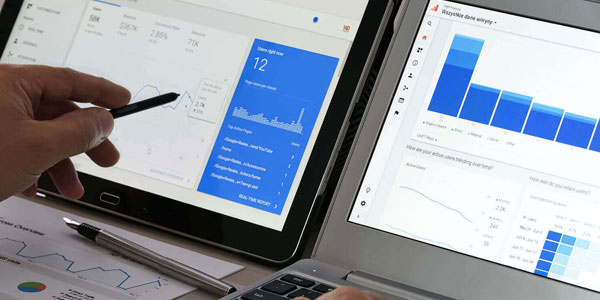
The two major reasons a website owner decides to redesign the website are either “Is does not have the WOW factor” or “It has started perishing”. The latter might be a major concern though. Yes, it is possible that a website yields good conversions yet starts perishing.
Online business is not a mere game of possessing a website and supplying products in a timely manner. It is a dreadful task of revamping the website from time to time without disturbing Google’s ranking.
The consumers sitting behind the screen do not see the efforts put it and how they can receive the links of the most relevant and useful websites on their Google search.
However, the bottom line is how to maintain SEO while retaining your SEO ranking.
3 Core Areas to Consider When Maintaining your SEO Rankings:
There are main areas that must be considered at priority when you’re redesigning your website.
- The common problems that may arise during a redesign.
- What works best for your current SEO strategies?
- Changes that the new website will come with.
These main areas not only aid you in maintaining the SEO rankings but also help in improving it. Beyond just working on your SEO weaknesses, you should comprehend on bringing its level up.
Possible Issues to pop up while Rebranding
If we look further into the above challenges mentioned, the possibilities are further categorized. When you’re focusing on designing your website again, update the backend and improve the user experience.
I have narrowed down the possibilities and have come with areas with high priority to take care of:
- Content to be removed.
- Content that is to be changed.
- Based on the new sitemap, the content may move.
- URL’s might get altered.
- Optimization at different levels may change.
- Surprise technical issues.
- Remaking of internal linking structure.
- Possible domain and subdomain edits.
- Protocol changes.
7 Checklists to Keep intact and Not lose SEO Rankings.

1. Monitoring SEO
Various mistakes could be made while redesigning the websites. This is the biggest blunder out of all. There are so many tasks to carry out when you decide to get website redesign services. There are so many tasks to carry out when you decide to redesign. If something goes wrong, it would be way too late to sort it all out. To avoid the massive effort to put in unnecessarily, first invest in good SEO monitoring tools.
The monitoring tools help you to keep an eye on all of your key SEO metrics. It keeps a tab on any kind of hindrance or modifications
You can use “ Semrush ” SEO tool for keeping the tab on:
- Sum of all the backlinks.
- Domain Authority.
- Speed.
- Spam score.
- Alerts for spam, virus or malware and removing them.
- Alexa Global Rank.
- Organic Traffic of Search engines.
2. Working On Website On Local Development Environment.
When the changes are taking place on a website, it is quite obvious that mistakes would happen. That’s why it is not a good idea to modify/upgrade the live website.
When the website has to go under construction, it has been either disabled (not recommended) or moved to a separate domain or local domain until fixed. (Recommended)
Before you jump onto the conclusions for each of the respective suggestions stated above, I would describe the reasons.
The website redesigning takes a good deal of time and it’s a long process. Therefore, there are high chances of the users landing on your website and bouncing to the competitor’s website in frustration. So you not only lose your audiences but also gave a bad impression of your website. The concept of swapping the website from a temporary domain back to the original domain is a stroke of genius.
3. Maintain Page Structure.
Users are comfortable and familiar with the structure of your website. A significant amount of changes would make users uncomfortable.
Google crawls the website now and then to keep track of data and Metadata. You can take out the history of the crawled data to match the old website with the new one.
Alternatively, you can also use tools like “Screaming frog” to map out your existing website and differentiate it with the new website.
4. Establishing 301 & 302 Redirects.
A 301 redirect is used for permanent redirection from one URL to another. It is better for SEO as it is responsible for the redirection of the traffic of visitors and search engines.
A 302 redirect is a temporary redirection for the users to bounce to the required page for the short period just before it is removed.
Redirecting the old URLs to the new ones is the first step of redesigning. Maintain a record in the spreadsheet of all the old URLs. For the seamless experience, only when the website has been made live, crawl the old URLS backs to its place to ensure the smooth redirection.
5. User-Friendly 404 Pages.
This is the most integral part of the website redesign. A good 404 page is responsible to provide a way out of the error page to the user. Sometimes the links get lost or don’t work.
In this case, either the user/ search engine should be directed to the relevant page or provide a way to a helpful or potentially relevant page.
“Is broken link bad for SEO?” is one of the most frequently asked questions and yes and they are bad for your website. But if the broken link is programmed to redirect to another site/page then it is not bad for SEO.
Don’t forget to put a good 404 page in such a way that is both user-friendly and search engine friendly. A search engine box on the page and the menu of the website is to be placed.
6. Updating the Backlinks.
Updating the backlinks is super important and plays a crucial role in the website redesigning. It scares every website owner.
There is n number of backlinks on a website and all of them have to be redirected. We can edit them on our own. However, there are few links which are not in our hand to handle.
The ideal way is to reach out to the owners of the important backlinks you’ve mentioned and request them for editing the links.
They impose a huge impact on SEO and therefore cannot be risked in any manner. Alternatively, you can integrate 301 redirects for some of the backlinks.
7. Minuscule SEO Details before Going Live.
Don’t get too excited too soon once the website is redesigned. Test, test, and test before you send it out! The website running on the dev is never the same when it goes live.
Make sure you fix every little detail.
- Optimize all the new images for faster loading.
- Ensure that robot.txt is configured aptly to allow Google crawlers.
- Verify the new website by logging into Google Webmaster.
- Use tools like “Moz, DeepCrawl” to get a deep insight into technical issues.
- Make every page mobile-friendly.
- Optimize the website fully and check the page speed on Google.
Preserving the top-notch quality of SEO content is the only way that will lead you to achieve success in your online business. From performing the website audits to fixing the broken links and setting up the correct Redirect page.. none of the mentioned points can be skipped for a successful website update.
Bytegrow IT Solutions is an innovative digital marketing agency uk which makes the transition from old website to new website seamlessly and renders success in making your website reach in top rankings of Google.
